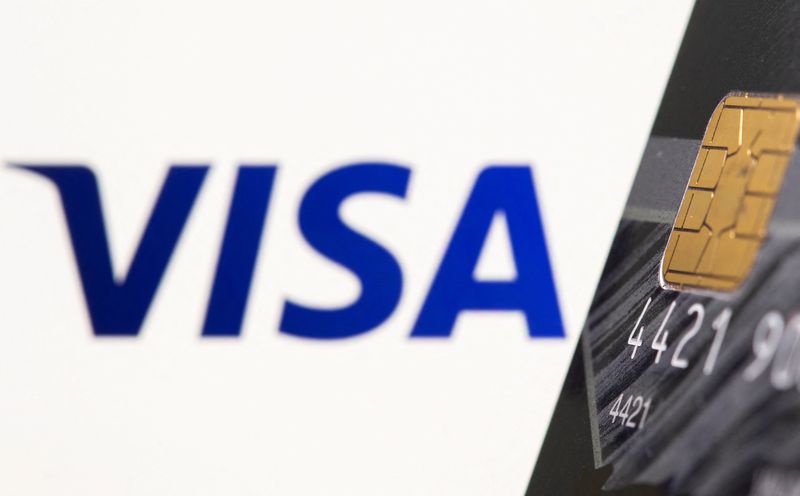(Reuters) -Visa’s fourth-quarter profit beat Wall Street expectations on Tuesday, as consumers set aside worries of a slowing economy and swiped their cards to splurge on travel and dining out, sending its shares up 2% in trading after the bell.
U.S. consumer spending has remained largely resilient despite elevated interest rates, with analysts expecting a soft landing for the economy to boost confidence and reignite spending growth.
Payments volume rose 8% in the quarter on a constant-dollar basis, while cross-border volume excluding intra-Europe, a gauge of international travel demand, surged 13%.
Visa (NYSE:V) Chief Financial Officer Chris Suh on a call with analysts said consumer spend across all segments has remained relatively stable, compared with the third-quarter.
The world’s largest payments processor forecast full-year 2025 adjusted net revenue growth of high single digits to low double digits. That compares with Wall Street expectations of 10.8% growth, according to data compiled by LSEG.
It expects adjusted profit per share growth to be at the high end of low double digits, compared with expectations of 11.7% growth.
Meanwhile, the U.S. Justice Department last month sued Visa for allegedly monopolizing debit card markets. Visa has called the claims meritless.
The lawsuit came months after another major legal setback for Visa, when a judge in June rejected a $30 billion antitrust settlement wherein Visa and Mastercard (NYSE:MA) had agreed to limit fees they charge merchants.
Visa is also reportedly planning to lay off about 1,400 employees and contractors by the end of the year. The company currently employs more than 30,000 employees.
Visa’s net revenue jumped 12% to $9.62 billion in the quarter, beating expectations of $9.49 billion.
Its fourth-quarter adjusted profit of $2.71 per share topped expectations of $2.58.
Visa’s shares have gained 8.3% in 2024, trailing the 22% jump in the benchmark S&P 500 index.

